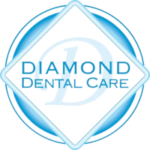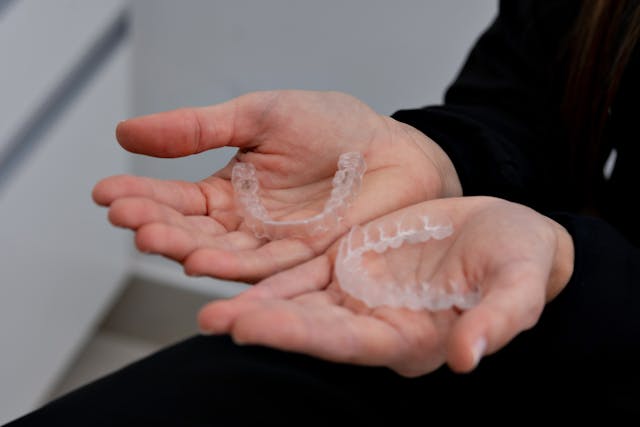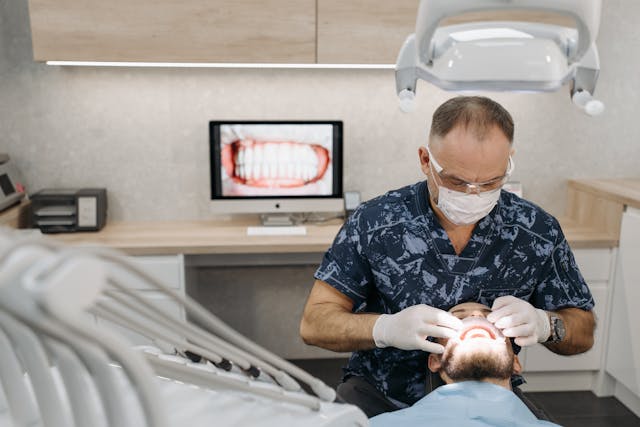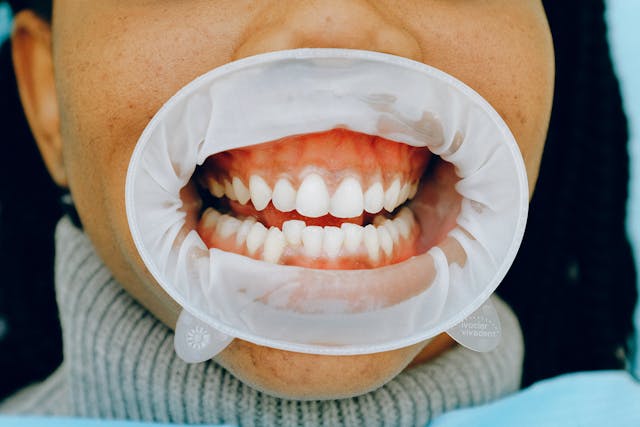In today’s world, technology has revolutionized every aspect of our lives, and dentistry is no exception. With the integration of advanced tools and techniques, dental professionals are now able to offer more accurate, efficient, and comfortable treatments. From diagnostics to restorative procedures, modern technology is transforming how dental care is delivered and perceived. This article explores the major technological advancements in dental care and their impact on patients and dental practices.
At Diamond Dental Care, we offer a variety of solutions to address most aesthetic concerns. During your visit, we’ll perform a thorough examination, take X-rays, and discuss your desired timeframe before presenting you and your parents with several treatment options. Given that some treatments may require specific timeframes, it’s advisable to book your appointment with us as soon as possible.
To schedule an appointment, simply call us at (909) 860-7579. You can also connect with us on Facebook or share your feedback on Yelp. Thank you!
The Evolution of Dental Technology
Early Developments in Dental Tools
The journey of dental care technology began with simple hand tools, like scalers and forceps, that have evolved over centuries. As the understanding of oral health advanced, so did the instruments used to address dental issues. Early dental care was often rudimentary, with limited pain management options, making treatments uncomfortable for patients.
Transition to Digital Dentistry
Fast forward to today, where digital dentistry is becoming the norm. Traditional manual techniques have largely been replaced by computer-aided designs, digital imaging, and robotic-assisted surgeries, allowing dentists to deliver faster and more precise treatments. This transition has dramatically improved the accuracy of diagnoses and the quality of care.
The Impact of 3D Imaging in Dentistry
How 3D Imaging Enhances Diagnostic Capabilities
One of the biggest advancements in modern dental care is the use of 3D imaging. Unlike traditional 2D X-rays, 3D imaging provides a more detailed view of the patient’s mouth, including teeth, bone structure, and tissues. This improved visibility enables dentists to detect issues that may not be visible on regular X-rays, such as small fractures, impacted teeth, or infections.
Benefits of Cone-Beam Computed Tomography (CBCT)
Cone-beam computed tomography (CBCT) is one of the leading technologies in dental 3D imaging. It provides a detailed and accurate 3D representation of a patient’s oral structures, allowing for better treatment planning, particularly in cases like dental implants, orthodontics, and complex surgeries. The use of CBCT reduces the risk of complications, offering patients a safer and more predictable outcome.
Laser Dentistry: A Game-Changer
Pain-Free and Precise Treatments
Laser dentistry has emerged as a groundbreaking tool for performing various dental procedures with minimal discomfort. Lasers can replace traditional drills in many treatments, offering a pain-free experience. They allow for more precise cutting, faster healing, and reduced need for anesthesia.
Applications of Laser Technology in Dental Procedures
Lasers are used for a wide range of dental procedures, from cavity preparation and root canal treatments to gum surgeries and teeth whitening. They offer benefits such as reduced bleeding, decreased swelling, and enhanced precision in tissue removal, making treatments more effective and less invasive.

The Rise of CAD/CAM Technology in Dental
Faster Production of Dental Restorations
CAD/CAM (Computer-Aided Design and Computer-Aided Manufacturing) technology has revolutionized the production of dental restorations. With CAD/CAM, dentists can now design and fabricate crowns, bridges, and veneers right in their offices, reducing the need for multiple visits and improving the speed of treatment.
How CAD/CAM Improves Accuracy and Aesthetics
This technology allows for highly accurate impressions and restorations that fit perfectly. The precision of CAD/CAM results in aesthetically pleasing dental restorations that mimic the natural appearance of teeth, ensuring patient satisfaction.
Digital Impressions: Accuracy and Comfort
Traditional vs. Digital Impressions
Digital impressions have replaced traditional methods of using molds to capture the structure of a patient’s mouth. Instead of uncomfortable, goopy materials, a small scanner is used to create a 3D digital model, providing a more comfortable experience for the patient.
Impact on Patient Experience and Treatment Outcomes
Digital impressions are more accurate and reduce the chance of errors. This leads to better-fitting restorations and quicker treatment times, improving both the patient’s experience and the overall success of their dental procedures.
The Role of Artificial Intelligence (AI) in Dentistry
AI in Diagnosis and Treatment Planning
Artificial intelligence is increasingly playing a role in dentistry, helping dentists diagnose and plan treatments more effectively. AI systems can analyze X-rays, scans, and patient histories to detect early signs of dental issues and suggest optimal treatment plans.
Machine Learning in Dental Care for Predictive Analytics
Machine learning, a subset of AI, allows dental practices to predict patient needs and treatment outcomes by analyzing large sets of data. This technology helps dentists customize treatments and improve patient care based on past experiences and patterns.
The Use of Robotics in Dental Surgery
Robotic-Assisted Surgeries for Precision
Robotics has entered the dental field to assist in surgeries, offering greater precision and control. Robotic-assisted procedures ensure that delicate tasks, such as dental implants, are performed with minimal errors, reducing the risk of complications and improving recovery times.
Enhancing Patient Safety and Outcomes
By combining human expertise with robotic precision, dental practices can provide safer surgeries with predictable outcomes. This technology ensures that patients receive the highest standard of care with minimal risks.
Tele-Dentistry: The Future of Remote Dental Care
Benefits of Virtual Consultations
Tele-dentistry allows patients to consult with their dentists remotely via video calls. This is particularly beneficial for follow-up visits, consultations for minor issues, or advice on oral hygiene, making dental care more accessible.
Access to Care in Underserved Areas
Tele-dentistry also provides an opportunity to deliver care to people in remote or underserved areas. Patients who may not have access to in-person dental care can receive consultations, advice, and even preliminary diagnoses without leaving their homes.
The Role of Advanced Technology in Patient Education
Interactive Tools for Better Oral Health Education
With technology, patient education has become more engaging. Dentists can use apps, videos, and digital tools to explain treatments and oral health practices in an easily understandable way. These interactive tools make learning about oral hygiene more accessible and effective.
Engaging Patients in Their Treatment Plans
Technology allows patients to play an active role in their treatment plans. Digital visuals help patients see what is happening inside their mouths, empowering them to make informed decisions about their dental care.
Advanced Sterilization Technologies in Dental Clinics
Importance of Infection Control
Sterilization is a critical part of dental care. With the advancements in sterilization technology, dental practices can ensure that their instruments and equipment are clean and safe, reducing the risk of patient infections.
Modern Sterilization Techniques for Patient Safety
Modern sterilization techniques, such as ultrasonic cleaners and autoclaves, have improved the hygiene standards in dental practices. These technologies ensure that all tools used during procedures are sterile, providing a safer environment for patients and staff.
Benefits of Technology for Dental Practices
Streamlining Operations and Reducing Costs
Technology has not only improved patient care but has also streamlined operations for dental practices. From scheduling and record-keeping to billing and inventory management, technology reduces the administrative burden and lowers costs, enabling practices to operate more efficiently.
Enhanced Patient Experience and Satisfaction
Integrating technology into dental care has led to a more positive experience for patients. Faster treatments, better outcomes, and improved communication between dentists and patients contribute to higher satisfaction rates.

Promoting Diamond Dental Care with Advanced Technology
Services Offered at Diamond Dental Care
Diamond Dental Care, located at 303 South Diamond Bar Blvd, Ste 2C, Diamond Bar, CA 91765, prides itself on staying at the forefront of dental technology. The clinic offers a wide range of services, from routine checkups to advanced cosmetic and restorative procedures, all using the latest technology to ensure the best results.
Cutting-Edge Technology at Diamond Dental Care
At Diamond Dental Care, patients can expect the use of advanced tools like 3D imaging, laser dentistry, and CAD/CAM technology. These innovations allow the team to provide more accurate diagnoses, faster treatments, and better outcomes, all while ensuring maximum comfort.
Why Choose Diamond Dental Care for Advanced Dental Care
Choosing Diamond Dental Care means opting for state-of-the-art technology combined with a caring and professional staff. The clinic is dedicated to providing top-notch dental services, ensuring that every patient receives personalized care tailored to their needs.
Conclusion
Advanced technology is transforming the field of dental care, making treatments faster, more accurate, and less invasive. From 3D imaging to AI and robotics, these innovations have drastically improved patient outcomes and the overall dental experience. As technology continues to evolve, the future of dental care looks even more promising, offering new ways to enhance oral health.
FAQs
What are the main technologies shaping modern dental care?
The key technologies include 3D imaging, laser dentistry, CAD/CAM, AI, robotics, and tele-dentistry.
How does 3D imaging improve dental treatments?
3D imaging provides a more detailed view of the patient’s mouth, allowing for more accurate diagnoses and better treatment planning.
Are laser treatments pain-free?
Yes, laser dentistry significantly reduces discomfort and often eliminates the need for anesthesia.
What are the benefits of choosing a dental clinic with advanced technology?
Clinics with advanced technology offer faster, more accurate treatments with improved outcomes and a more comfortable experience.
How can AI improve my dental care experience?
AI helps in diagnosis, treatment planning, and predictive analytics, ensuring personalized and efficient care.



